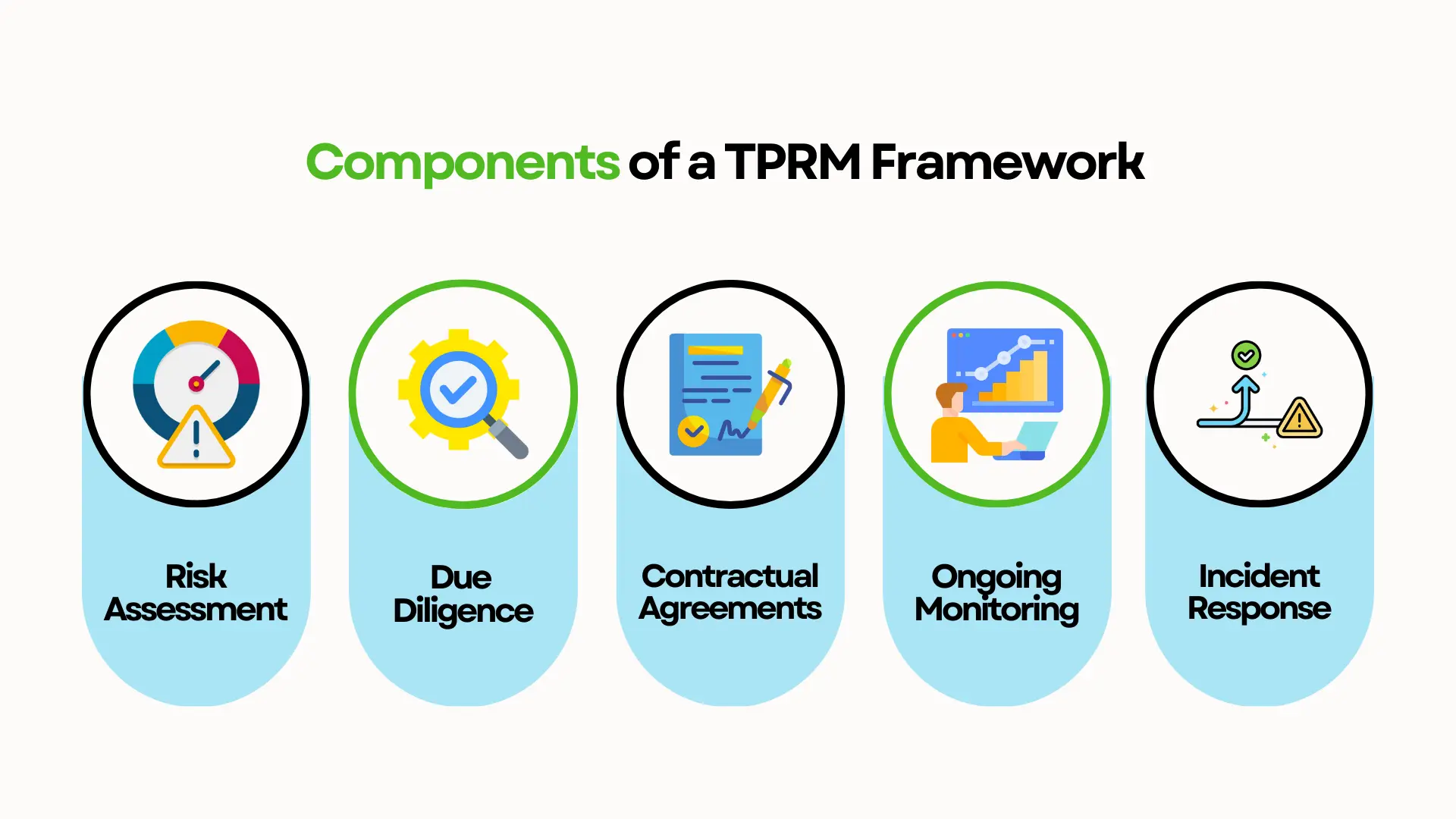Introduction
In today’s interconnected world, businesses rely heavily on third-party vendors for various operations — from software services to supply chains. While these partnerships bring innovation and efficiency, they also introduce vulnerabilities that can jeopardize data security, compliance, and reputation. Third-party risk management (TPRM) is the strategic approach companies use to identify, assess, and mitigate these risks, ensuring sustainable and secure operations.
Understanding Third-Party Risks
Third-party risks stem from external partners who handle critical business functions or sensitive data. These risks include cybersecurity threats, operational disruptions, regulatory non-compliance, and reputational damage. For example, a data breach at a cloud service provider can expose confidential customer information, leading to financial losses and legal penalties. Hence, understanding the full spectrum of risks is the first step in building a robust TPRM framework.
Key Components of Third-Party Risk Management
Effective TPRM revolves around several core components. First, businesses must conduct due diligence before partnering with any third party. This involves assessing their security protocols, financial stability, and compliance history. Risk assessment follows, where companies evaluate the potential impact and likelihood of various risks. Continuous monitoring is crucial to detect emerging threats and ensure the vendor maintains agreed-upon standards. Lastly, incident response plans prepare businesses to act swiftly if a third-party breach occurs, minimizing damage and downtime.
Benefits of a Strong TPRM Strategy
Implementing a comprehensive TPRM strategy offers multiple benefits. It enhances data security by ensuring vendors follow stringent cybersecurity practices. It also supports regulatory compliance, helping businesses meet industry standards like GDPR, HIPAA, or PCI-DSS. Moreover, TPRM safeguards brand reputation — customers and stakeholders trust companies that proactively manage third-party risks. Additionally, it provides operational resilience, reducing disruptions caused by vendor failures or cyberattacks.
Best Practices for Third-Party Risk Management
To build an effective TPRM program, businesses should adopt proven best practices. Vendor categorization helps prioritize high-risk vendors for deeper scrutiny. Contractual agreements must include clear risk management clauses, ensuring accountability. Companies should also leverage technology, such as risk management platforms, to automate assessments and track vendor performance. Regular audits and training ensure that employees and partners remain aligned with the company’s risk management objectives.
Challenges in Third-Party Risk Management
Despite its importance, TPRM isn’t without challenges. One major hurdle is lack of visibility — businesses often struggle to monitor the extended network of sub-contractors and fourth parties. Resource constraints also pose an issue, especially for small and medium-sized enterprises. Furthermore, rapidly evolving cyber threats demand continuous updates to risk strategies. To overcome these challenges, companies must foster a risk-aware culture and invest in scalable TPRM solutions.
Future of Third-Party Risk Management
As businesses embrace digital transformation, TPRM will continue to evolve. Artificial intelligence (AI) and machine learning (ML) are set to revolutionize risk assessments, offering real-time analysis and predictive insights. Blockchain technology holds potential for creating tamper-proof vendor records, enhancing transparency and trust. Additionally, regulatory frameworks will likely become more stringent, pushing companies to prioritize TPRM even further.
Read More - https://www.marketresearchfuture.com/reports/third-party-risk-management-market-8720
Conclusion
Third-party risk management is no longer optional — it’s a business imperative. By understanding risks, implementing robust strategies, and staying agile against emerging threats, companies can build resilient, trustworthy operations. Prioritizing TPRM not only protects sensitive data and ensures compliance but also strengthens brand reputation, fostering long-term success in an increasingly connected world.

